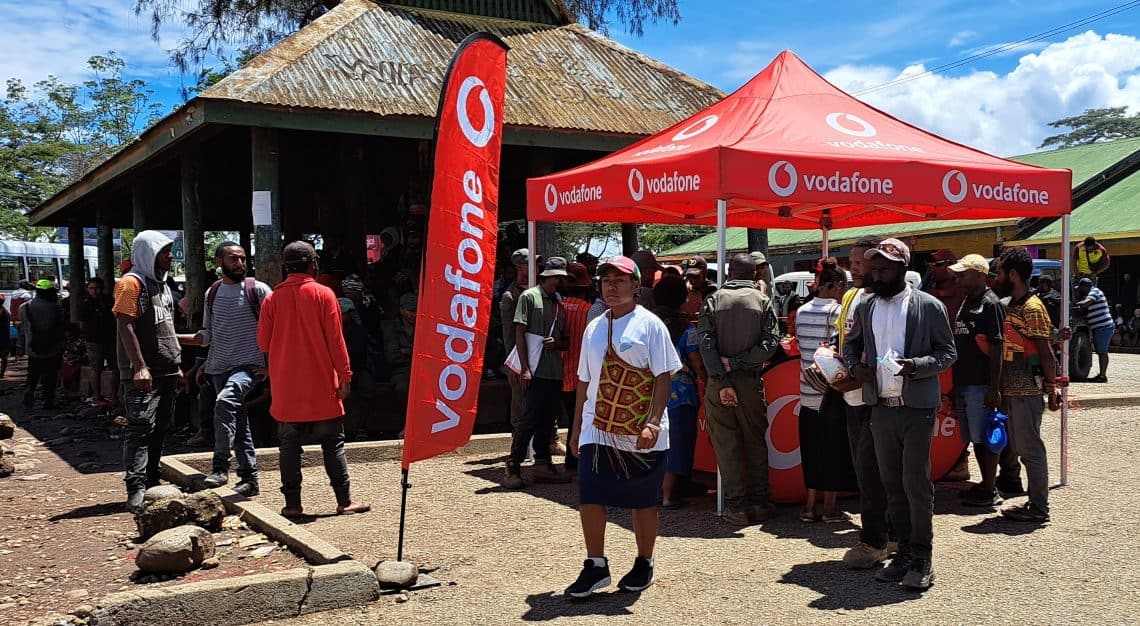After years of high prices for mobile data in Papua New Guinea, consumers are now able to access lower prices that represent better value.
We have been monitoring mobile internet prices in PNG since the start of 2020. This article reports on research findings since the April 2022 update. (Previous updates are available here via hyperlink on devpolicy.org)
From the beginning of May 2022, we have added an additional mobile network operator to our monitoring program. The operator launched in late April 2022 with “Vodafone” branding and is run by Fiji’s Amalgamated Telecom Holdings, which is listed on the South Pacific Stock Exchange. Its entry into the PNG market was assisted by funding from the Asian Development Bank. We are now recording the prices offered by Telikom, Digicel and Vodafone.

How do the offerings of the three mobile network operators compare? Table 1 shows the data rates offered by the three companies in January 2024. Telikom’s rates are similar to those of new entrant Vodafone in terms of value, or toea per megabyte (there are 100 toea in a kina). Digicel offers more choice and Digicel users typically need to select a high-end option to access a rate comparable to those offered by Telikom and Vodafone.The rates shown in Table 1 are substantially better in terms of toea per megabyte than the rates we presented in a similar table in July 2020. At that time, Telikom’s data cost 0.60 toea per megabyte for 1, 3 and 7-day plans and their best-value offering was 0.50 toea per megabyte for a high-end, 30-day data bundle. Digicel’s data rates at that time ranged from 7.50 toea per megabyte to 0.80 toea per megabyte. Therefore, it is clear to see that mobile internet rates have improved in PNG since 2020.However, unlike Telikom’s and Vodafone’s offerings, Digicel’s data plans now come with strings attached. Between 73 and 80 per cent of the data purchased for each of the plans (1, 3, 7 & 30-day) is only valid to be used from 6:00 AM to 6:00 PM, with the balance able to be used at any time of the day. Although Digicel’s data prices have dropped, we feel that these time-of-day restrictions place their customers at a disadvantage. They create an additional mental load for users and require them to monitor their own behaviour, thus continuing what anthropologist Robert J. Foster has referred to as Digicel’s tendency “to encourage personal responsibility for monitoring data usage”.As can be seen in Table 1, users who can spend more up front are able to purchase better value data than users with less money at the time of purchase. We feel that such pricing structures, which have been adopted by all three telecommunication companies, place low-income users at a disadvantage.
The rates shown in Table 1 are those offered to prepaid users. We monitor prepaid services because the majority of mobile telephone connections in PNG are prepaid. Since April 2021, Digicel has offered a subscription service to prepaid users through its “REDclub”. Under REDclub, data rates are similar to the ones provided by Telikom and Vodafone under their normal plans. However, in order to access plans under REDclub, Digicel users are required to subscribe for 10 kina a week or 20 kina a month. REDclub data plans do not have time-of-day conditions attached. Telikom and Vodafone do not offer subscription services.
Overall, our research has shown that all three mobile network operators have decreased their prices. This is welcome news for mobile phone users in PNG. Nonetheless, it is worth acknowledging that some offerings remain unattainable for certain citizens. For example, people who live a subsistence lifestyle, operate in the informal economy or sustain themselves through insecure employment may not be able to afford REDclub subscription fees. Similarly, families in urban areas with high housing costs and other expenses may not be able to buy the data plans that represent the best value.
The Coral Sea Cable System (CS2) launched in December 2019 and the Kumul domestic internet cable completed early in 2020 were expected to improve access to the internet and reduce internet pricing in PNG. In their first few years of operation, the cables appeared to have had no positive impact on mobile internet prices, as was shown by our earlier updates.
The entry of a new company into PNG’s mobile market in 2022 appears to have had a demonstrable impact on the mobile internet rates offered by the two existing mobile network operators. It is unclear whether the purchase of Digicel’s Pacific operations by Australian company Telstra had any bearing on Digicel PNG’s pricing structures.While there are multiple factors at play, such as regulation of wholesale prices, it seems that the introduction of additional competition may have done more for the budgets of consumers than the earlier introduction of cable systems. However, we acknowledge that the price decreases could have been caused by something else, or a combination of factors, and we cannot be sure of the cause.
Detailed analysis and graphs showing the prices offered by the three mobile service providers over time can be downloaded here.
Disclosure: This research was supported by the Pacific Research Program, with funding from the Department of Foreign Affairs and Trade. The views represent those of the authors only.This article appeared first on Devpolicy Blog (devpolicy.org), from the Development PolicyCentre at The Australian National University.
Amanda H A Watson is a research fellow with the Department of Pacific Affairs, Australian National University. She taught at the University of Papua New Guinea’s School of Business and Public Policy under the ANU-UPNG Partnership. Dr Watson has also taught at Divine Word University, Macquarie University, Queensland University of Technology and TAFE NSW.Moses Sakai is a Research Fellow at the Papua New Guinea National Research Institute. He taught at the University of Papua New Guinea from 2018-2023.
The opinions expressed in this article are those of the author and do not necessarily reflect the opinions of this publication.
